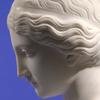OVER TEN YEARS IN THE MAKING, JOAN B MIRVISS LTD PAYS TRIBUTE TO JAPANESE AVANT-GARDE CERAMICISTS: “BIRDS OF DAWN: PIONEERS OF JAPAN’S SÔDEISHA CERAMIC MOVEMENT”
- NEW YORK, New York
- /
- January 17, 2011
Over ten years in the making, Joan Mirviss Ltd presents “Birds of Dawn: Pioneers of Japan's Sôdeisha Ceramic Movement,” which opens on March 16, 2011, at 39 East 78th Street in New York. This exhibition, which coincides with Asia Week New York, will focus on three seminal founders of this extremely influential movement: Yagi Kazuo (1918-79), Suzuki Osamu (1926-2001), and Yamada Hikaru (1923-2001). More than sixty works by this Kyoto triumvirate will be on view and offered for sale.
With their non-traditional avant-garde approach favoring sculptural ceramics, the art of Suzuki Osamu, Yagi Kazuo and Yamada Hikaru has always captivated me,” said Mirviss, who marks her thirty-fifth year as a specialist in the world of Japanese art. “About ten years ago, I started to think about the viability of an exhibition in New York that would include some of their important works,” she added. “Nothing like this has ever been staged anywhere-- including Japan.” According to Mirviss, acquiring a significant body of major work by these celebrated masters was a task that required over two decades of networking in Japan.
Following on the heels of WWII, with scant resources available, these artists joined together to establish their own exhibition systems that gave them both freedom and a vehicle for artistic dialogue. They drew their name, Sôdeisha, literally, “Crawling Through Mud Association,” derived from a Chinese ceramic glazing term, to express their complete absorption with their medium and its inherent limitations.
Breaking free from traditional ceramics, the trio looked to poetry, music, surrealism, cubism, ancient art forms, and Western literature for points of departure. Influenced by diverse European artists such as Juan Miró, Paul Klee, Constantin Brancusi and Pablo Picasso, they created work that they termed “objets” but that had clear links to Japanese culture. Unlike sculptors or painters, they viewed their medium, clay, as the founding element in the creation of a work of art that also demanded finely honed techniques and processes, while enabling them to explore a wide range of themes and forms.
In order to survive the impoverished conditions present in postwar Kyoto, the artists initially created functional vessels, often using Chinese Cizhou ware for glazing inspirations. However while utilitarian, they stand as highly original sculptural vessels today. By the mid- 1950s the Sôdeisha artists were able to adjust their focus to purely non-functional work. As early as 1951, their work was shown in Paris, at the Musée Cernuschi together with that of numerous other Japanese ceramists and had a significant impact on the European audience of the time. Works by Yagi Kazuo were being acquired by savvy Americans as early as 1950 and by 1962 had entered thecollection of the Museum of Modern Art.
The central and galvanizing figure in the development of the Sôdeisha group, which was only disbanded in 1994, was unquestionably Yagi Kazuo (1918-79), in part because he was a voluminous author of articles for various periodicals and never afraid to challenge popular conception. His work reflects the same passion and zeal as it evolved through the decades into evocative sculptures using a large array of techniques.
With a long career, the impact of the art of Suzuki Osamu (1926-2001) was substantial as both artist and professor at Kyoto City University of Arts. His sculptural work conveys a sense of primitivism, monumentality and modernity. Although he also worked in porcelain, it is his stoneware forms made from Shigaraki clay covered with a red iron-slip glaze that are best known and collected by museums worldwide.
Yamada Hikaru (1923-2001), using a multiplicity of glazes and shapes, focused on perforated flat forms allowing the viewer to see through work, creating a “borrowed landscape.” Also an inspirational teacher, at Osaka Art University he sought to deconstruct the vessel in a wide variety of approaches, rendering them as two-dimensional representations.
Today the pioneering approach and avant-garde aesthetic of these three men remains as highly influential as they were sixty years ago. “To this day, the influence of these three men’s work and artistic sensibilities, first formulated in post-war Kyoto in the late 1940s, remains far-reaching throughout the world of Japanese contemporary art,” Mirviss said.
Accompanying the exhibition is a fully illustrated book with essays by recognized scholars including Joe Earle, Vice President and Director of the Gallery at Japan Society; Rupert Faulkner, Senior Curator of the Asian Department of the Victoria & Albert Museum and Glenn Adamson, Head of Graduate Studies and Deputy Head of Research at the Victoria & Albert Museum
For visuals or further information, please contact Marilyn White at 973-783-3649 or mwhitepr@aol.com; alternatively at the gallery, Nami Hoppin at 212-799-4021 or nami@mirviss.com; www.mirviss.com


















